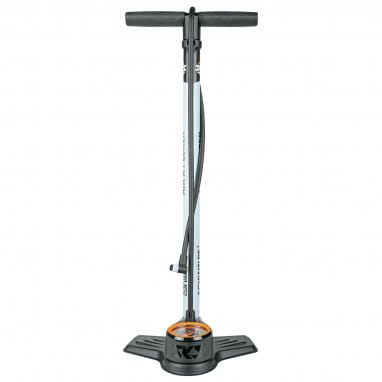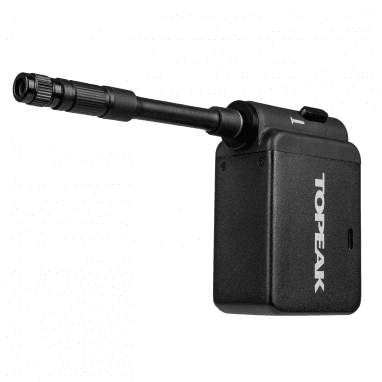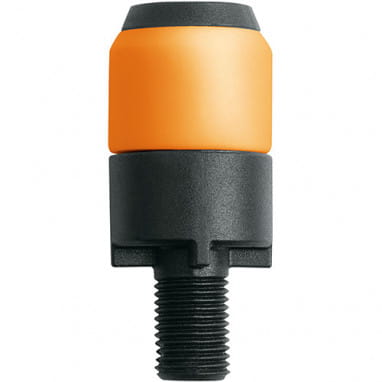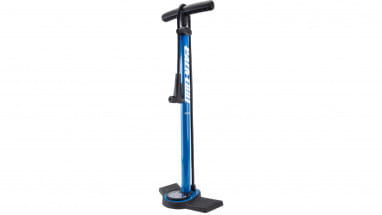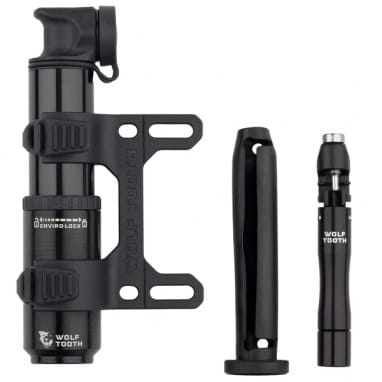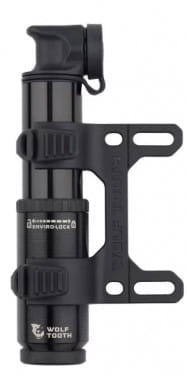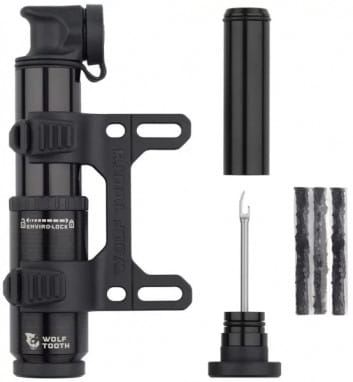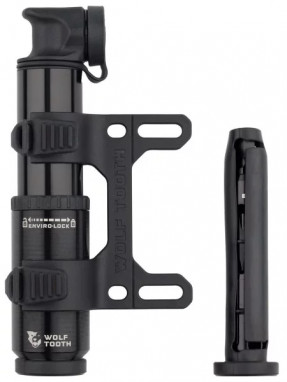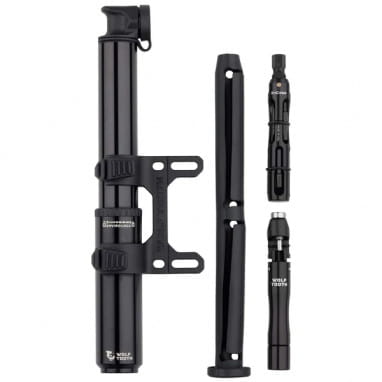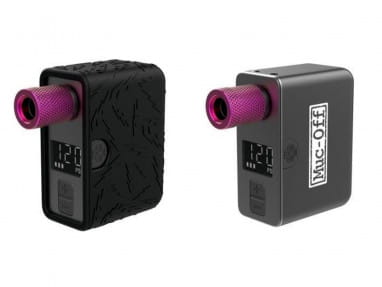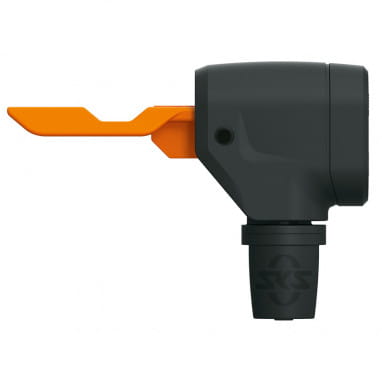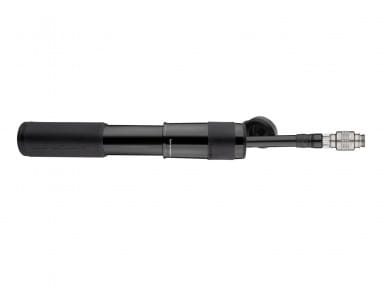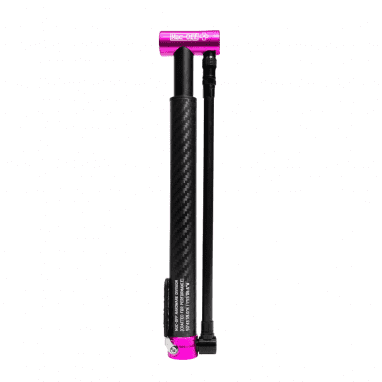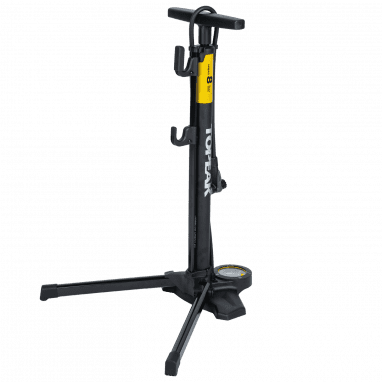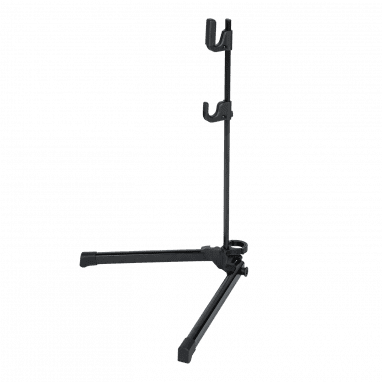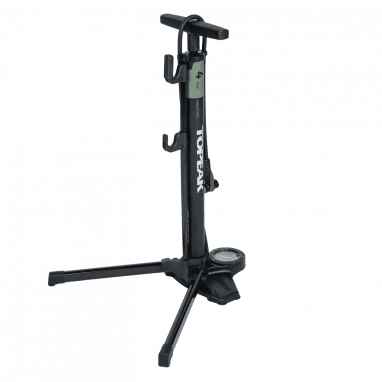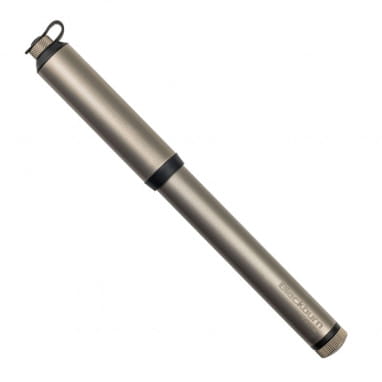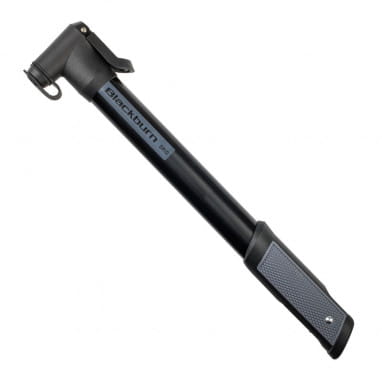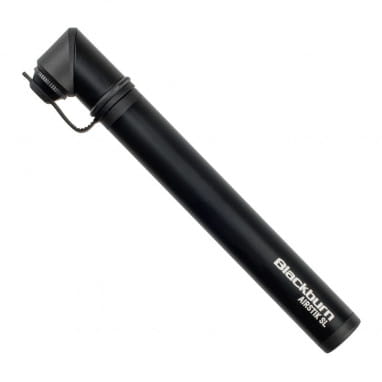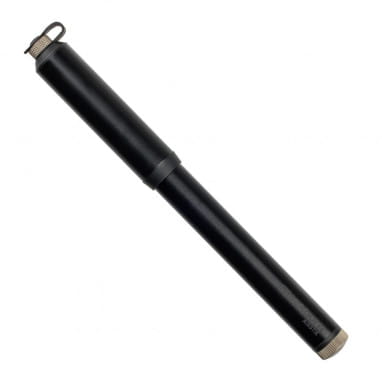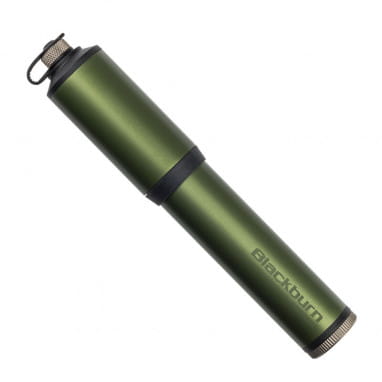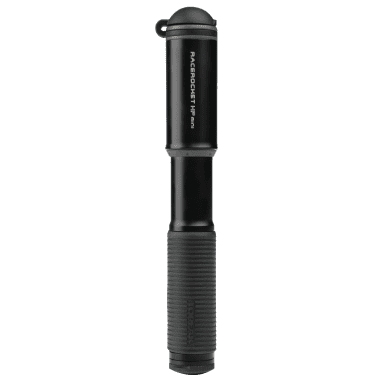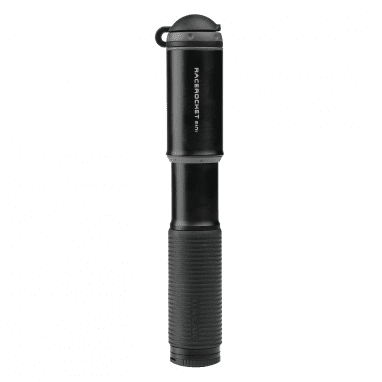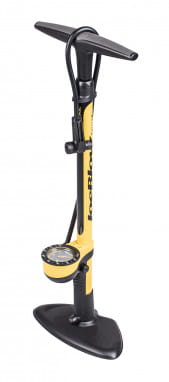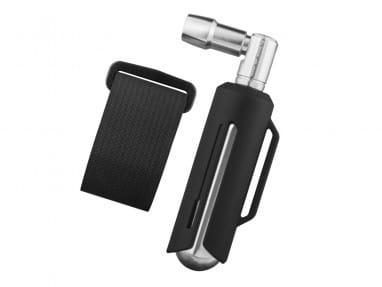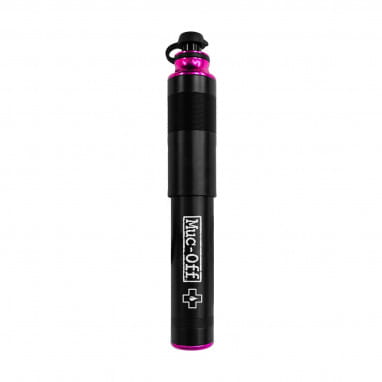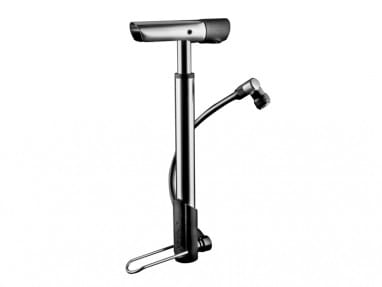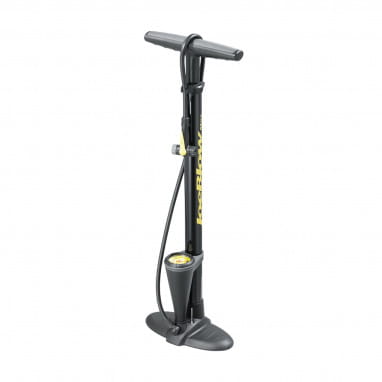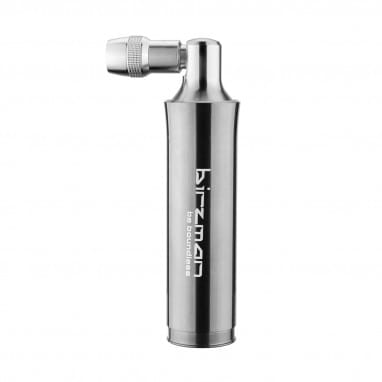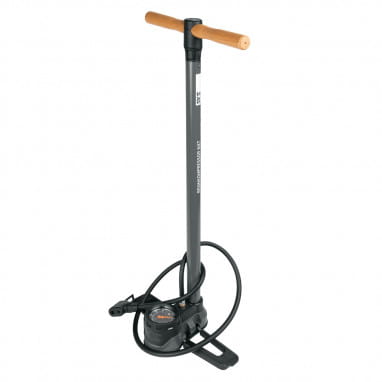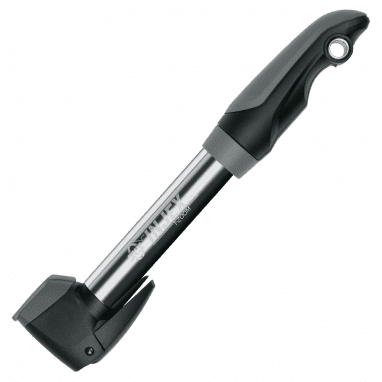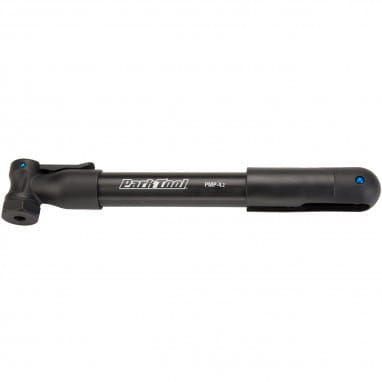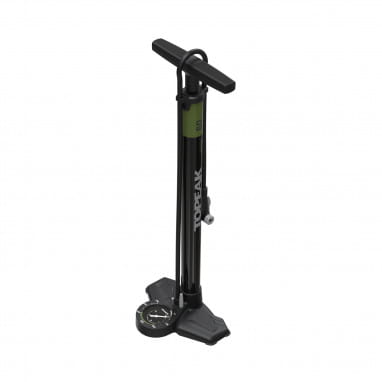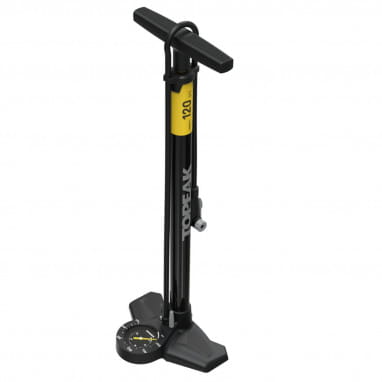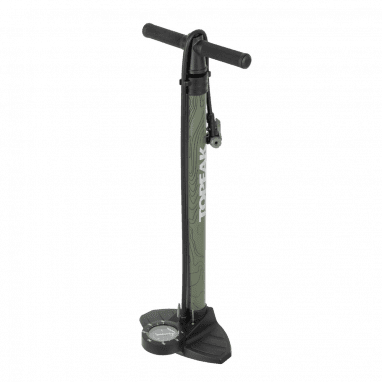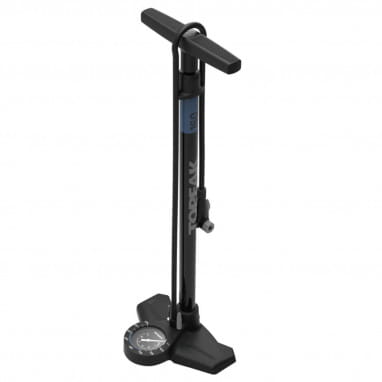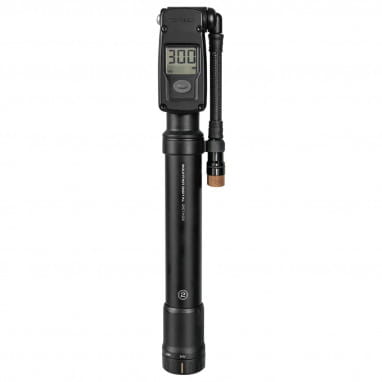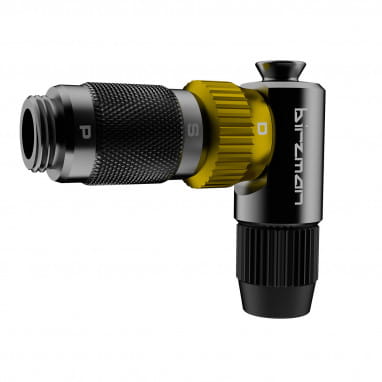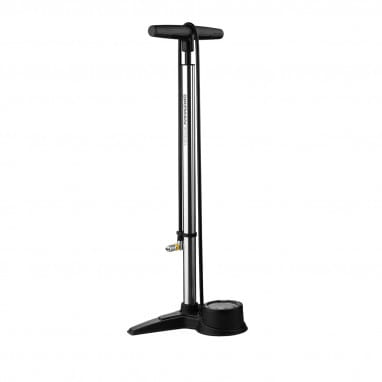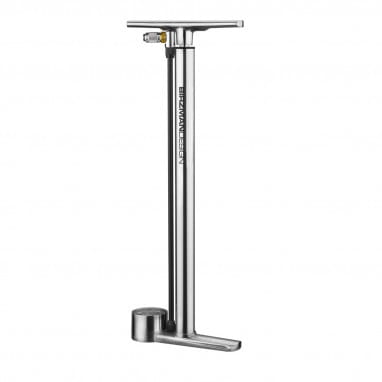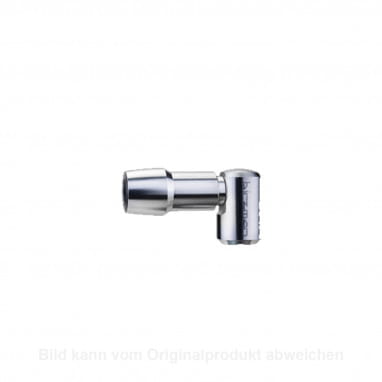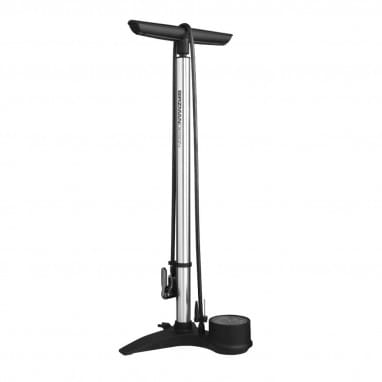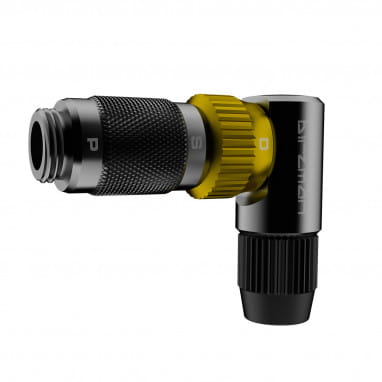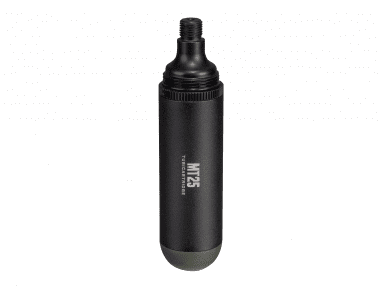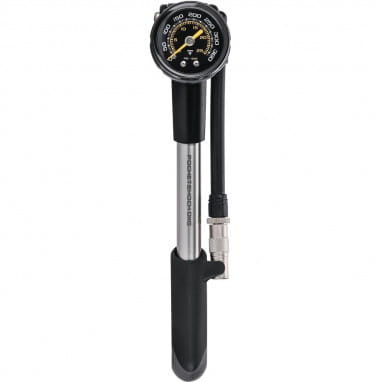A flat tire is by far the most common bicycle trouble – any biker will be faced with it at some point. Even a pricey, brand new bike can run out of air. After all, small, nasty, pointy things are lurking everywhere, just waiting for a tire they can dig into. Should that happen, it will be easy to get back on the road again. If you’ve got the right air pump! Inner tubes have different valves, so you can't just buy any old air pump. There are also different types of bicycle pumps. We have all the information you need about bicycle air pumps for you further down on this page.
A good air pump is the most important accessory for your bike, because even if you don't have any holes in the tube, bicycle tyres always lose some air over time. If the tire pressure is not optimal, you make your life on the bike unnecessarily difficult, because a tire with too little pressure rides with more rolling resistance, it virtually "sticks" to the road. Then you have to use more muscle power to get your bike off the ground. With optimal tire pressure, a bicycle rolls effortlessly. That's why you should have a bicycle pump and check the tire pressure regularly.
How to buy the right bike pump
Bicycle pumps are not all the same. There are obvious differences, large floor pumps for example are best left at home, while small mini pumps are happy to go on tour with you. Air can also be supplied in different ways, either the pump simply sucks in air from the environment or a CO2 cartridge blows compressed air into the hose. Up to this point you have free choice, with the valve however, your wheels set the tone, because the hole in the rim determines which valve the tubes must have and from that it depends which pump you can use
Stand Pump
A large standpump for bikes moves large amounts of air quickly. With a double-stroke floor pump, even completely flat tires will be full again in no time. Since you fix the pump with two foot pads on the ground, the pump stands stable, via a flexible hose, the air pump is connected to the bike and you're ready to go. As these pumps do not depend on a little more or less mass, they usually have a pressure gauge and several valves, so they can be used universally and you can precisely dose the amount of air. There are two holes on the valve head, the larger one is for car valves, the smaller one fits tubes with Dunlop or Sclaverand valves. With the appropriate adapters incidentally, these pumps also inflate balls or air mattresses. These wheel pumps can also be found under the term foot pump
By the way, who would have thought that a floor pump, of all things, would make it to cult status? The SKS Racing Compressor is the pump by which all others must be measured and a true classic of bicycle culture. The legendary air pump can be found at all bike races and has taken all the test wins in product tests and in all the major bike magazines.
Mini Pump
Practice tests have proven it conclusively: The best bike pump is the one you have with you when you need it. That's why the classic bicycle hand pumps have shrunk more and more. Today, these mini hand pumps fit in the pockets of your bike jersey or in a small frame bag. Some manufacturers supply straps to go with their mini pumps so you can attach them to your frame. This way, you always have your spare air at hand. These pumps are also available with a pressure gauge. They often fit a certain bicycle valve, so you have to pay attention to the valve when buying or order the respective adapters at the same time. However, there are also mini pumps that fit all valve types. Mini pumps are hand-held air pumps, when they blow air from a cartridge they are called CO2 pumps.
CO2 pump
Don't feel like pumping it yourself? A CO2 pump will gladly do the manual labor for you. Many mini pumps have a small cartridge that blows compressed air into your tires in a flash. These bike pumps are of course very convenient, but they have a disadvantage: when the cartridge is empty, nothing works. You have two options here: You always take spare CO2 cartridges with you, or you choose a combi pump that also works in manual mode. Again, these bike pumps are mostly universal, but there are also models built for a specific valve.
Shock pump
The more you drop and jumpt on a mountain bike the more often you should use a shock pump to check and adjust the pressure in your shocks.
Also trekking bikes usually have suspension forks that make sustained cycling particularly comfortable. These shocks need an air cushion, so they can be adjusted to the weight of the rider, the terrain and the riding style. This is where a precise fit fine-tuning is needed, so that shock pumps work as precisely as possible, they are screwed to the valve and not just clamped or plugged in. So that you can also adjust the pressure down if necessary, these air pumps have a release valve that allows you to let air out of the shock in small amounts. Damper pumps always have a digital pressure gauge or a pressure gauge with pointer.
Tubeless Pump
You need a special pump to mount and maintain tubeless tires. A tubeless pump blows a lot of pressure into the tire in a short time, so the tubeless tire fits into the rim in a flash and the sealant stays where it belongs - in the tire. A normal pump usually won't do the trick, a good floor pump might build up enough pressure, but if you're treating yourself to tubeless, an appropriate bike pump is a worthwhile purchase.
Sometimes a bike pump isn't enough!
Especially if you are often and for a long time on your bike, standpump and CO2 pump quickly reach their limits. Especially commuters who rely on their bike for the way to work and therefore want to keep it always ready for use are on the safe side with a duo of two pumps. A massive floor pump is practical, it quickly brings air back to worn tyres, but with its large dimensions and high weight it is absolutely unsuitable for on the road. In addition to a floor pump, you should get yourself a compact hand pump that you always have in your pocket.
If you have a CO2 pump for your bike rides, you should have another pump that you can use at home to pump air into the bike tires without using CO2 cartridges.
Do I need a pressure gauge?
Every bike needs a different air charge. A downhill bike rides at a different pressure than a trail bike, a road bike tire needs more inflation than a city bike. The allowable pressure depends not only on the type of bike, but also on the make and model of the tires and tubes. Cold weather also requires special tire pressure, in winter you should deflate a little, this way your tires will have more grip. A bicycle pump with pressure gauge measures the pressure that is already in your tube. You can read how to determine the right pressure in our blog article "How to determine the right tire pressure". Tire pressure is measured in Psi or Bar so many pumps display both units.
Which valve does my tire have?
There are bicycle wheels and bicycle tubes mainly with three different valves.
- The Sclaverand valve, also known as the Presta valve or French valve
- the Schrader valve, also known as an auto valve
- The Dunlop valve, also flash valve or bicycle valve
Your pump must match the valves on your bike. Some bike pumps have valve heads that are suitable for multiple valves, for many pumps there are also adapters. For high quality bike pumps you can buy combination heads that fit all valves. There are also valves for balls and attachments that you can use to inflate your bike tires at the compressors at the gas station.
Get bike pumps and accessories
at BMO.
In our online shop you can find many air pumps for your bike from different manufacturers, including Blackburn, SKS or Lezyne and Topeak. Here you can also order the necessary accessories such as valve adapters, CO2 cartridges, air pressure gauges or straps.
